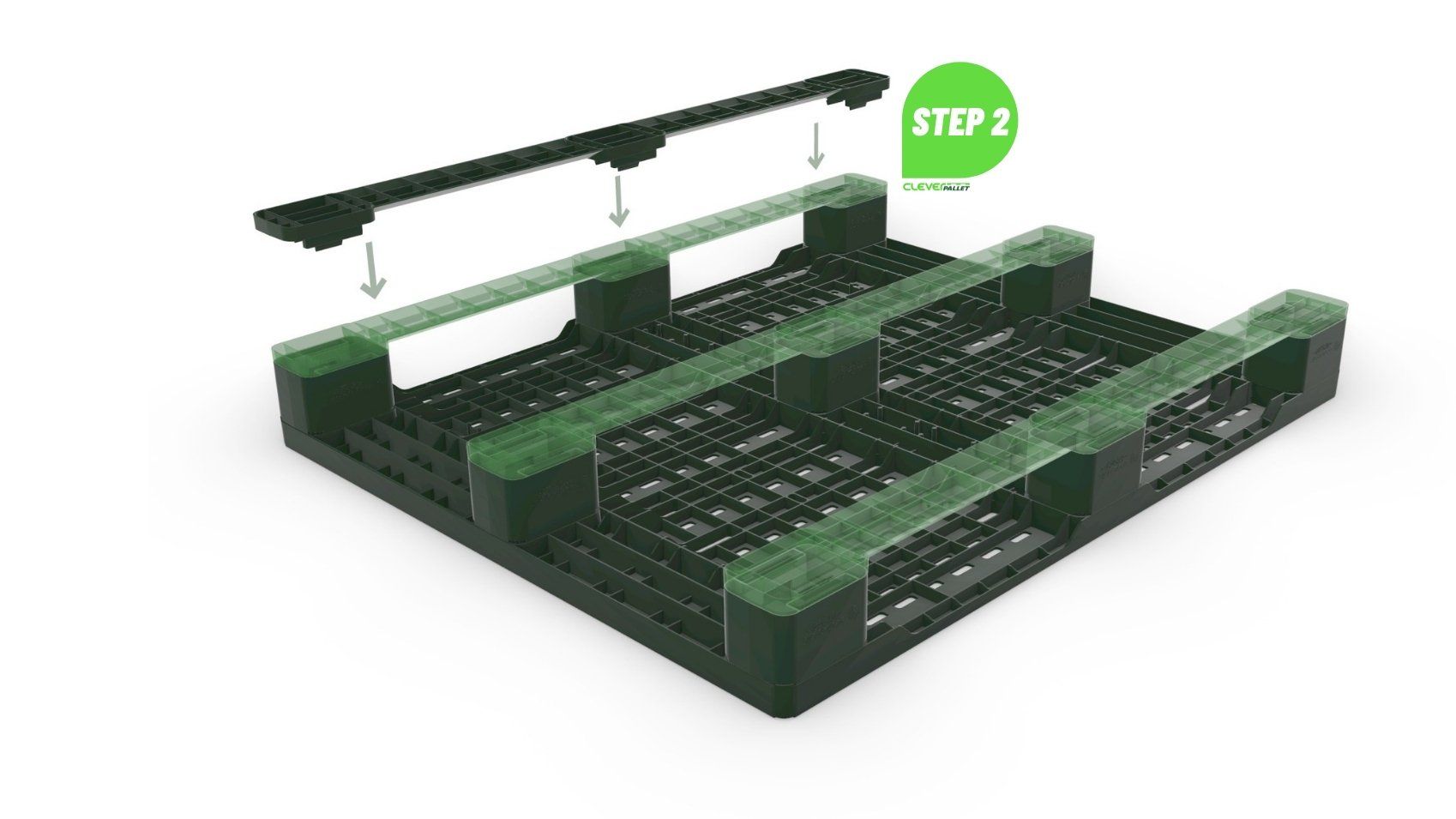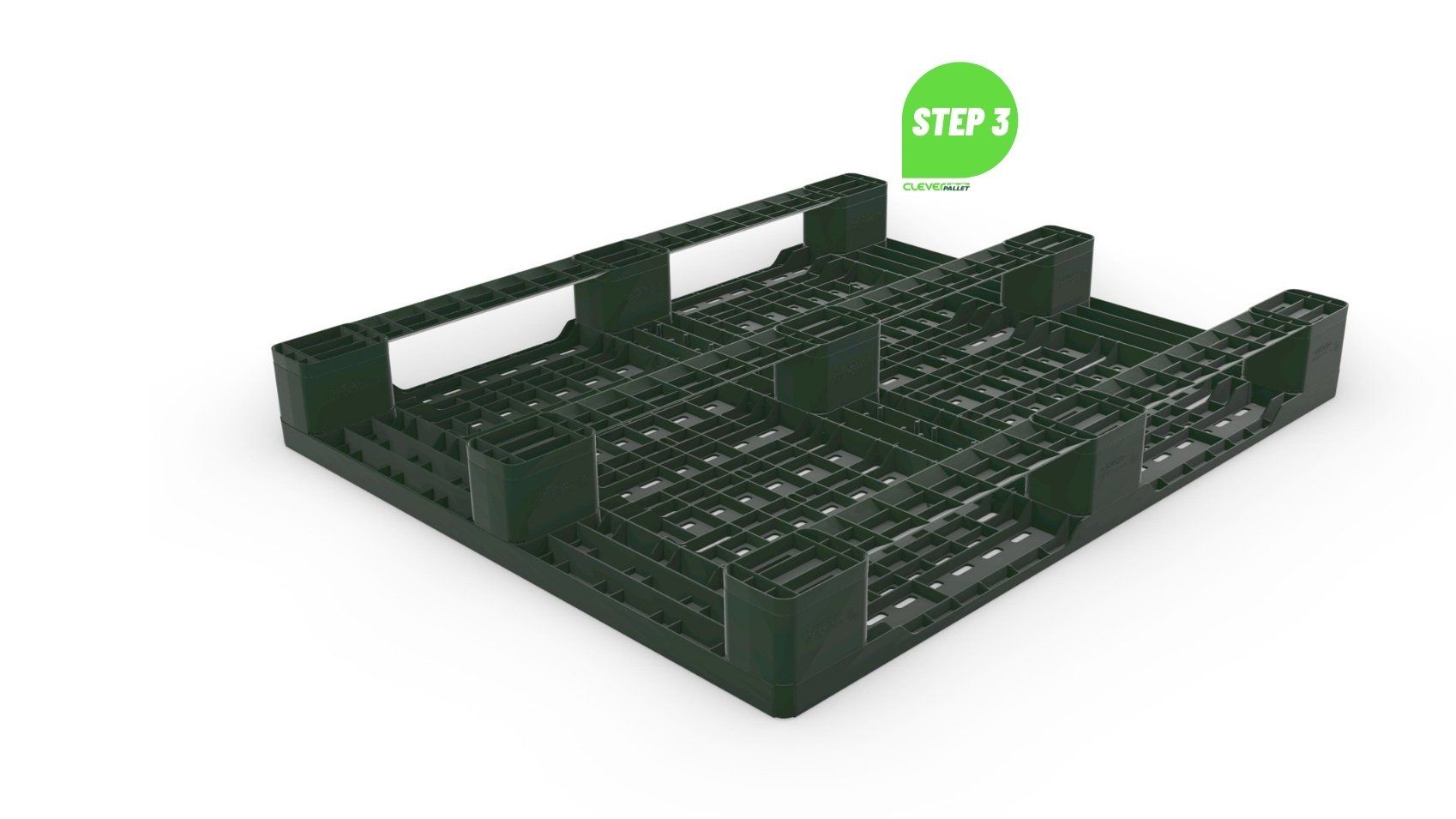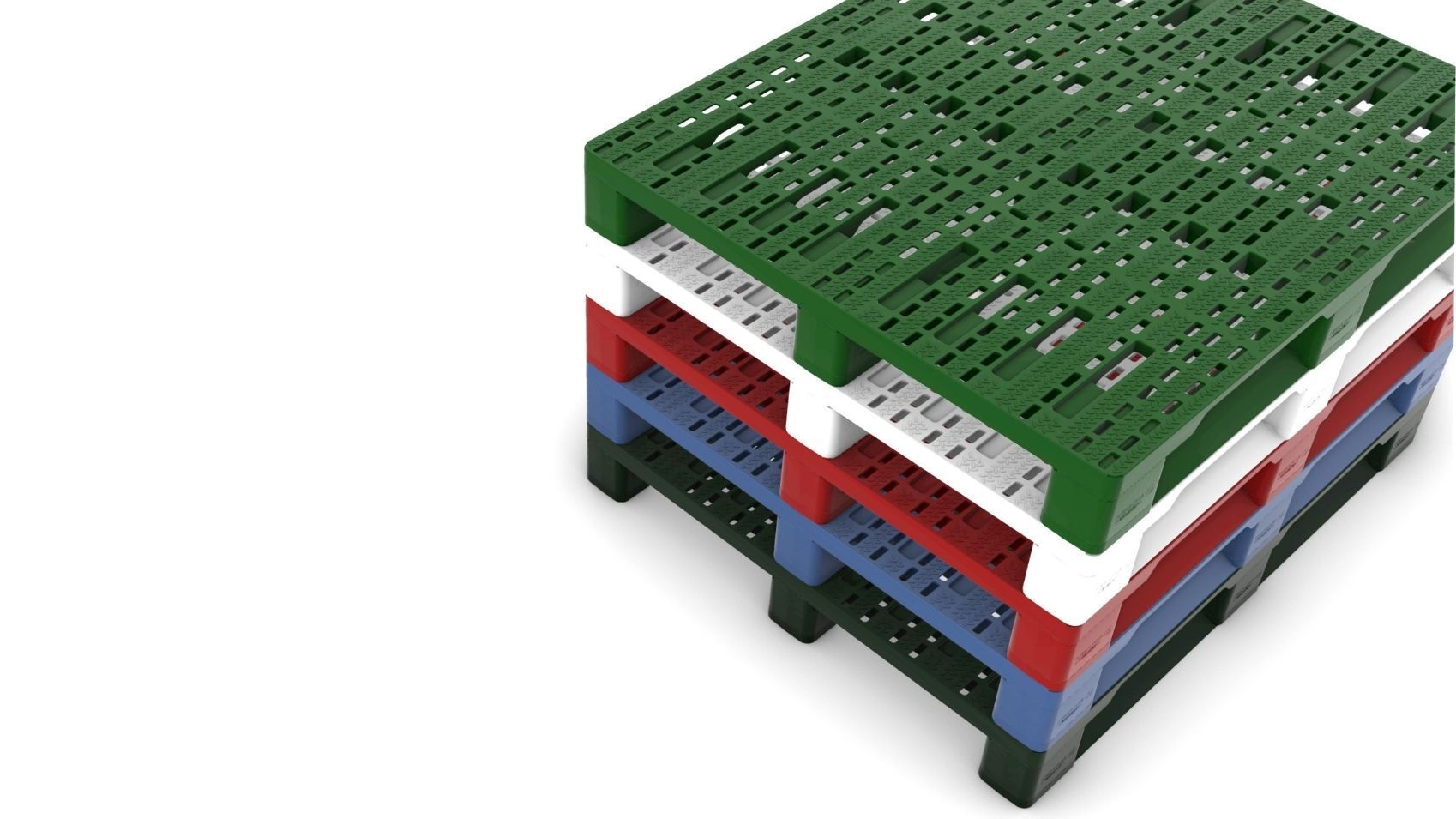RECYCLED PLASTIC PALLETS
PLASTIC PALLETS FOR HANDLING IN ALL INDUSTRIAL AND COMMERCIAL SECTORS
Plastic pallets are widely used in all industrial and commercial sectors. According to your needs, you can choose from many pallets in the catalog. Plastic pallets are essential for transport, rapid material transfer or storage in industries. The support platform is elevated above by feet which therefore allow forking and lifting by means of transpallets or forklifts.
WHAT ARE PALLETS?
Pallets or pallets are platforms made of plastic or wood used for the transport, handling and storage of goods. The pallets are widely used in companies, industries of various kinds, but also supermarkets and department stores. The pallets can be easily moved with transpallets or trolleys thanks to the forks.
WHAT MATERIAL CAN THE PALLETS BE MADE OF?
The pallets available on the market can be made of different materials. It can be said that the pallet has become part of the logistics chain in all respects: even companies that manage bulky goods or non-standard format and therefore are not able to use standard format pallets, supply themselves with pallets with specific characteristics (both in size and in the construction material) in order to complete the packaging of your materials in the best possible way.
Among the most common pallets we find:
o - PLASTIC PALLETS
o - WOODEN PALLETS
WHAT FUNCTION DO THE PALLETS HAVE?
Plastic or wooden pallets perform several functions:
o Storage of goods
o Handling and transport of goods
o Shipping of goods
WHAT DO WE MEAN BY PLASTIC PALLETS?
The plastic pallet is more hygienic and lighter than the wooden pallets. Plastic pallets are defined eco-friendly because they are made with recycled material, they resist for years even after frequent use and are resistant to extreme climatic conditions. The plastic pallets always guarantee maximum efficiency and functionality.
Plastic platforms optimize production processes and are an excellent ally for logistics. Pallets in recycled plastic do not require phytosanitary certifications and treatments as they always comply with the rules contained in the FAO ISPM-15. Plastic pallets have no problems with mold, sawdust, rusty nails. Plastic pallets have a much lower weight than wooden pallets while maintaining the load capacity unchanged.
WHAT ADVANTAGES DO PLASTIC PALLETS HAVE?
Plastic pallets adapt easily to any type of use: In fact, plastic pallets suitable for food contact are available in the catalog, supplied in white color. They are easy to clean and guarantee hygiene and safety from contamination.
Weight of the plastic pallet: The plastic pallets in fact weigh about half of the same wooden pallet and therefore allow the load to be transported more easily. This feature is fundamental in handling and organization operations, thus saving time and money.
Greater capacity: Compared to wooden pallets, plastic pallets have a greater capacity and therefore allow you to manage the goods placed on the platform much more easily and to have economic savings as it is possible to store and ship more goods.
Resistant and long-lasting: The plastic pallets are robust and resistant to corrosive agents, in any weather condition and withstand frequent and continuous use over time. In fact, the duration is about ten times higher than that of wooden pallets.
Stackable and stackable: Plastic pallets allow you to save time during internal handling operations and optimize space when not in use, obtaining hygienic and clean storage.
They do not leave splinters and have no nails: Unlike wooden pallets, plastic platforms do not present risks and dangers such as a nail coming out of the pallet or splinters and sharp corners. The plastic pallets therefore guarantee maximum safety in the workplace.
WHAT ARE THE FACTORS THAT DETERMINE THE VALUE OF THE PALLET DURING ITS USE?
Forklift: The 2-way pallet is designed to allow the introduction of the forklift truck only on two sides. The lower beams allow it to be used in pallet racking. The 4-way pallet has a structure that allows the introduction of the forks of a transpallet on all four sides of the pallet. The absence of bartacks allows them to be stacked reducing space when not in use.
Capacity: When choosing the pallet, the capacity is essential to understand if it is the right product for our handling needs. The capacity can be STATIC, therefore the ability of a pallet to withstand a load without suffering damage or causing it to the goods it supports when stationary. Or the capacity can be DYNAMIC, that is the weight that a pallet can support when it is transported by a forklift and has the two forks as its only support points.
HOW TO ASSESS THE DYNAMIC AND STATIC CAPACITY OF THE PALLETS?
The capacity of the pallets must consider the maximum weight that the pallet can support from stationary to the ground and what it can support when the pallet is in motion.









